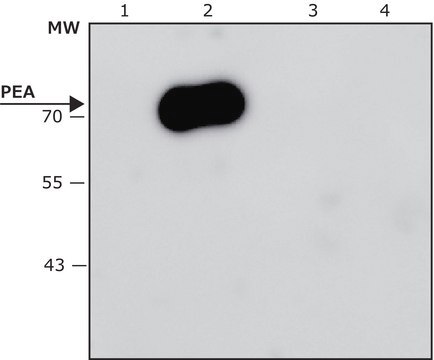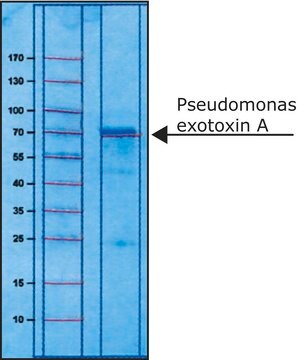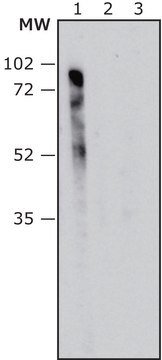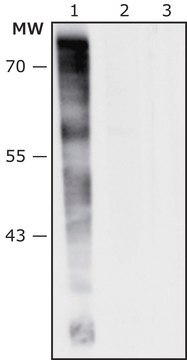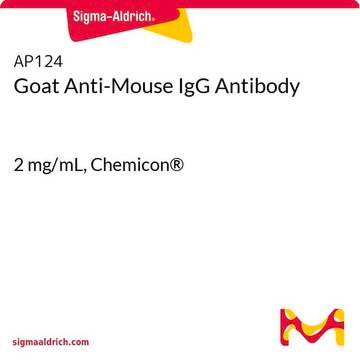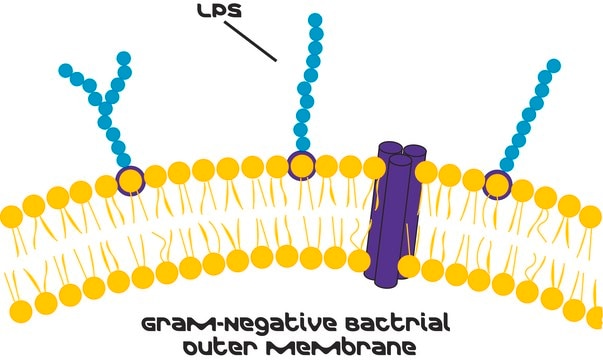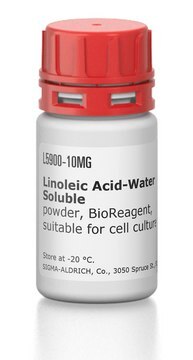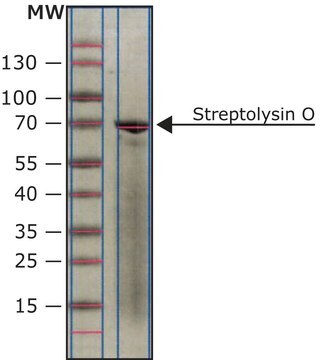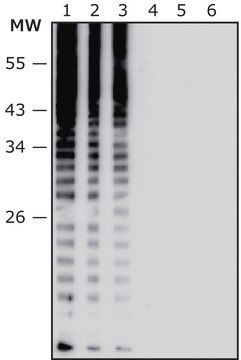P2318
Anti-Pseudomonas Exotoxin A antibody produced in rabbit
whole antiserum
Synonym(s):
Anti-ETA
About This Item
Recommended Products
biological source
rabbit
Quality Level
conjugate
unconjugated
antibody form
whole antiserum
antibody product type
primary antibodies
clone
polyclonal
contains
15 mM sodium azide
species reactivity
(Pseudomonas aeruginosa)
technique(s)
dot blot: 1:20,000
indirect ELISA: 1:250,000
shipped in
dry ice
storage temp.
−20°C
target post-translational modification
unmodified
Gene Information
Pseudomonas aeruginosa PAO1 ... toxA(877850)
General description
Immunogen
Application
- in the in vitro analysis of the stability of fusion toxins in serum
- to construct an epidermal growth factor receptor (EGFR)-targeted toxin to study its toxicity on Swiss mouse embryo NIH-3T3 cells transfected with human EGFR
- in the determination of the in vivo half-life of immunotoxins in serum
Biochem/physiol Actions
Physical form
Storage and Stability
Disclaimer
Not finding the right product?
Try our Product Selector Tool.
WGK
nwg
Flash Point(F)
Not applicable
Flash Point(C)
Not applicable
Certificates of Analysis (COA)
Search for Certificates of Analysis (COA) by entering the products Lot/Batch Number. Lot and Batch Numbers can be found on a product’s label following the words ‘Lot’ or ‘Batch’.
Already Own This Product?
Find documentation for the products that you have recently purchased in the Document Library.
Our team of scientists has experience in all areas of research including Life Science, Material Science, Chemical Synthesis, Chromatography, Analytical and many others.
Contact Technical Service